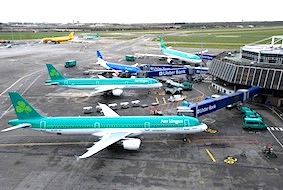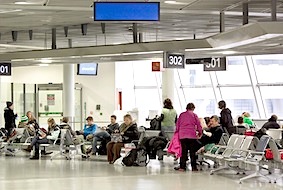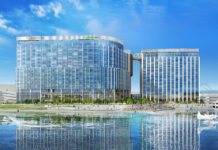Dublin Airport Authority is investing more than €1 million in a major refurbishment of one of the oldest elements of Dublin Airport – the 300 boarding gate area, located in the area formerly known as Pier B. The construction project started recently and is due to be completed before the busy summer peak at Dublin Airport.
The construction programme is a value for money solution aimed at radically improving the passenger experience in the area and will include the provision of new state-of-the-art ceiling and wall finishes, a new floor, new passenger seating areas and improved lighting throughout the area.

“Passengers will see a huge difference when this work is complete, as it will bring the 300 gates up to the standard of the other boarding gate areas at Dublin Airport,” said Dublin Airport spokeswoman Siobhan Moore. “The 300 gates have given more than five decades of service to the travelling public, and require a significant upgrade to transform them into a bright modern departures area for our customers.”
The 300 gates, which are accessed by passengers checking-in in both Terminal 1 and Terminal 2, are airbridge served boarding gates that were originally built as part of the Terminal 1 construction programme in the early 1970s.

The gates are used by passengers travelling with airlines such as Aer Lingus, British Airways, Lufthansa, Air Canada and Turkish Airlines and are capable of accommodating wide-bodied long-haul aircraft and short-haul aircraft. During the 1970s, 1980s and 1990s the 300 Gates were the main transatlantic departure point at Dublin Airport.
The original Pier B facility pre-dates the opening of Terminal 1, as the boarding gate area opened in May 1971 and Terminal 1 was opened a full year later in May 1972. Originally, the Pier B gates were accessed from the 1940s terminal building at Dublin Airport.
The decagon shaped boarding gate area was constructed from glass, steel and concrete and became a classic symbol of Dublin Airport in the 1970s and 1980s.




